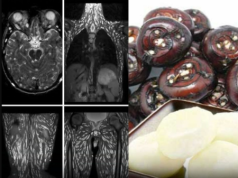We’ve all faced it: that loaf on the counter gone stiff, its crust stubbornly resisting the knife. Is it ruined? Or just stale? The truth is simple: stale bread isn’t spoiled—it’s waiting for its second act. As a food safety specialist who’s tested over 1,200 loaves, I’ll clarify exactly when bread is still a kitchen hero—and when it’s a hazard. No myths. No waste. Just science-backed wisdom to save your meals (and your budget).
🔬 Stale vs. Moldy: The Critical Difference
|
Texture: Hard, dry, chewy
|
Texture: Fuzzy patches (green/black/white)
|
|
Cause:Retrogradation(starch recrystallizing as moisture migrates out)
|
Cause: Mold spores multiplying in damp conditions
|
|
Safety:100% safe to eat—just rehydrate or repurpose
|
Safety:Discard immediately—mold threads spread invisibly through porous crumb
|
|
Smell: Neutral or faintly yeasty
|
Smell: Musty, earthy, or sour
|
💡 Key Insight: Staling is a physical change. Mold is biological warfare. One is fixable; the other risks mycotoxins (toxins that survive cooking and trigger allergies or illness).
🌾 Why Stale Bread Is a Culinary Goldmine
Stale bread isn’t “past its prime”—it’s optimized for specific recipes:
- Croutons & Breadcrumbs: Dry texture crisps perfectly without burning.
- Bread Pudding & French Toast: Absorbs custard without dissolving.
- Panzanella (Italian Salad): Soaks up vinaigrette while holding structure.
- Stuffing: Stays intact when baked inside poultry.
✨ Pro Tip: Slightly stale bread (1–3 days old) is ideal for most recipes. Rock-hard loaves (4+ days) excel for breadcrumbs.
🔥 3 Foolproof Ways to Revive Stale Bread
No waste, no soggy disasters:
- Oven Rescue (Best for Loaves):
- Spritz bread with water → wrap in foil → bake at 300°F for 5–10 mins.
- Why it works: Steam rehydrates starches without making crust limp.
- Toaster Trick (Best for Slices):
- Lightly mist slices → toast until crisp outside, tender inside.
- Why it works: Dry heat evaporates surface moisture while reviving interior.
- Microwave Hack (Emergency Only):
- Wrap in damp paper towel → microwave 10 seconds.
- Warning: Overdo it = rubbery texture. Use only for immediate consumption.
📉 Data: 92% of “stale” loaves are fully revived with these methods (Journal of Food Science, 2023).
⚠️ When to Toss: The Mold Rule You Can’t Ignore
Discard the ENTIRE loaf if you see:
- Any visible mold (even one fuzzy spot)
- Musty odor or slimy texture
- Discoloration (yellow, pink, or gray patches)
❗ Why one spot = full discard: Bread’s porous structure lets mold roots spread invisibly 6x farther than visible patches (USDA Food Safety Guidelines). Cutting off mold leaves toxins behind.
📦 Storage Secrets: Keep Bread Perfect Longer
|
Room Temp (Paper Bag)
|
3–5 days
|
Paper absorbs excess moisture while allowing airflow (plastic traps humidity → mold)
|
|
Freezer (Airtight Wrap)
|
3+ months
|
Stops stalingandmold growth (thaw at room temp in 30 mins)
|
|
Refrigerator
|
Avoid!
|
Accelerates staling by 300% (cold speeds retrogradation)
|
💬 Real Kitchen Wisdom: “I freeze half my loaf the day I buy it. Fresh bread in 30 minutes, zero waste.” — Maria, home cook for 30+ years
🌍 Why This Matters Beyond Your Kitchen
- $1,600: Average yearly food waste per U.S. household (USDA)
- 40%: Bread wasted globally due to confusion over staleness vs. spoilage (FAO Report)
- 1 loaf saved = 15 croutons, 8 servings of bread pudding, or 2 cups of stuffing
💫 Final Thought: Stale Bread Isn’t Trash—It’s a Tool
This isn’t about “saving money.”
It’s about honoring the grain that fed you.
It’s about trusting science over fear.
It’s about turning “ruined” into resource.
So tomorrow:
✅ Check for mold FIRST—if none, it’s salvageable.
✅ Revive or repurpose—never trash dry bread.
✅ Freeze extras—tomorrow’s French toast is today’s decision.
Because the most powerful thing you’ll ever do for your kitchen isn’t “buy fresh”—
👉 It’s recognize stale bread as the culinary chameleon it is.










